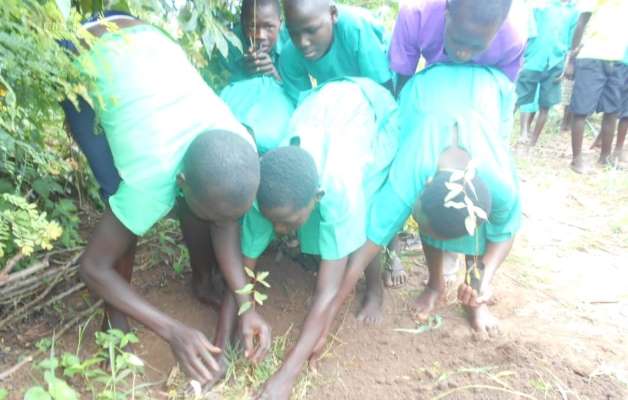There are many efforts to plant trees to help absorb carbon dioxide and counter the impacts of climate change. Together, these efforts promise to plant billions of trees. It’s important these are the right trees for location, climate and specific ecosystem.
It’s almost important to think about how these trees can help the particular needs of communities.Keying trees to local needs helps increase the likelihood they will be protected and, if necessary, cultivated and maintained.
Fruit trees can be especially good in this regard. They provide necessary and nutritious food for families. Surplus can be sold in local markets, providing an additional source of income for those who cultivate and harvest them. And because they do require cultivation and harvesting, communities—including children and youths—learn important skills in how to maintain and protect natural resources.
In Uganda, Village Environmental Clubs train members on various natural resource management issues, including planting and caring for fruit trees. Dozens of boys and girls have learned to build nursery beds, plant and care for seedlings, transfer small trees to appropriate locations, care for them as they grow, when and how to harvest their fruit and more. Students—and the families—have a direct stake in these trees and the produce.
While this program organized by international development organization World Neighbors is in rural Uganda, similar efforts are appropriate for other areas, including cities. By providing nutrition and income, fruit trees can and should be an important part of the larger tree planting effort.








